HD688
back to Superlux
back to measurements
home
Published: Feb-15-2017, updated: Jan-21-2018
NO SMOOTHING is applied to the shown plots. Most measurement sites have some smoothing applied which ‘irons flat’ sharp peaks and ‘wiggles’. I do not use smoothing because some info about sound quality is lost when plots are smoothed.
Aside from a small correction of the microphone itself also some correction in the lowest frequencies is applied to the plots to compensate for the perceived loss of bass when using headphones. This is described HERE in more detail.
A ‘horizontal‘ frequency response curve on the shown frequency response plots on this website thus indicates a perceived ‘flat’ tonal signature.
ALL measurements are made with a good SEAL on a flatbed measurement rig.
The shape of your head, bone structure, pad size, pad ‘softness, (compliance), hair or no hair and or wearing glasses may (drastically) change the frequency response of some headphones, so… your personal experience may differ substantially from these plots.
Frequency response (tonal balance) is the most sound-determining aspect of headphones. A horizontal line shows audible neutral response in the plots on this website. Deviations in different severities at different frequency bands have an effect on the sound character.
The bigger the deviation the stronger the effect.
Below an aid to help determining the sound character of headphones with relation to the frequency response.

Superlux HD688

The Superlux HD688 has a similar build as the HD662-EVO. It won’t be replacing the HD662-EVO though. The only obvious differences from the outside are the silver accents and different pads. The silver accents are painted and scratch quite easily revealing the black plastic underneath. On the inside, however, there are more differences.
The cable is detachable. It comes with a 1 meter and a 3 meter long cable which can also be combined to create a 4 meter cable. Also a clip is included so you can fix the headphone plug to the cord and can’t pull it out by accident any more.
Personally I find the force where the cable dis-attaches from the headphone just fine. The cable doesn’t come off easily but when the wire gets caught somewhere it unplugs itself.
Alas, the cable is the same as that of the HD662-EVO and is quite microphonic. This means that mechanical contact sounds, such as rubbing the cable against clothes for instance, are transferred to the cups and are heard during quiet passages and silence. This can distract or take away musical enjoyment for some people.
One must take into account that longevity of the little cable ‘dongle’ on the left ear cup is not so great. The cable has a tendence to break rather sooner or later. (see below)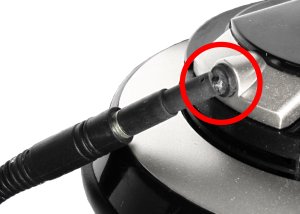
This is something to consider when buying this headphone.
A gold-plated 3.5 to 6.3mm TRS jack connector is included in the box as well, just like a soft carrying pouch.
Alas, unlike the HD681-EVO and HD662-EVO these headphones do not come with an extra set of velour pads (velvet, as Superlux calls it).
In stock form the HD688 comes with soft pleather pads.
The pleather (fake, vinyl based leather) is soft and the foam quite compliant so it is reasonably comfortable for those with small Pinnae.
These pads don’t have the familiar foam discs but have a thin (open) cloth sown into the pads. An advantage is that this cloth won’t decay as foam does over time. The extra space the foam would take up is not desired with these thinner (19mm) pads anyway.
The headband has a thin layer of rubber on the underside with ‘air filled cushions’. It is reasonably friendly to follicularly challenged heads (like mine) but not as comfortable as cloth or pleather padded headbands. Looks-wise it seems to be targeted at younger people or the cheaper section of the Hi-Fi market.
The headband frame (rods) can be twisted in various directions and seems quite sturdy. The headband, however, is mounted with a single screw to the cups on not too sturdy plastic parts. Don’t expect an unbreakable headphone. As the construction is the same as the HD681-EVO and HD662-EVO one can expect the headband to snap or plastic parts breaking as has been reported by quite a few owners. Build quality of this headphone has not improved over the 50% cheaper HD662EVO.
The clamping force of this prototype was uncomfortably high but can easily be lowered though as can be seen on this instruction video
There are no L/R markings on this headphone. Only Braille markings are present for the visual impaired listeners. A give-away for proper orientation is that the cable entry is situated on the left cup.
The biggest problem this headphone has is adjust-ability in the up and down direction. Most headphones have an adjustment range of 25 to 60 mm where this headphone (as well as the HD662-EVO, HD681-EVO and HD687) have a very small adjustment range of just 15 mm. This means that owners with a slightly larger head or with their ears a little bit lower will not be able to get a good fit with these headphones.
Another downside are the pads as they are a bit shallow. This means larger or more protruding ears won’t fit comfortably.
In the end with headphones it is always about the comfort AND the sound. The comfort is good for most but not all people.
The attenuation from outside noises is decent. The HD688 is fully closed (not hermetically sealed). Still some outside noises leak through via the pads so there is no total isolation. People around you won’t hear what you are playing.
Sound description
The stock HD688 sounds quite different from the prototype I reviewed earlier. Where the prototype had quite elevated bass the production model is more neutral and has rolled-off subbass.
The production model has dynamic sound and pronounced mids that have a sharp ‘edge’ to it. The HD688 is missing finer nuances at the same time. This is caused by a dip in the 3kHz area.
Many people feel such a dip is desirable because of the sensitivity of the ear being a bit higher in that area due to the so-called concha gain. While this has some merit when sounds are coming from the front the effect of the Pinna is much less when the sound is coming from the sides only.
In some sharp sounding recordings such a dip may be desirable, but in well made recordings the ‘realism’ that the prototype possessed is lacking here because of it.
The treble is elevated and sharp but not ‘coarse or grainy’. Some may feel that this makes this headphone very detailed, but while perhaps impressive at a first listen, it will cause listening fatigue sooner than one may desire.
Combined with the rolled-off subbass (and thus lacking in deep rumbles) the overall tonal balance is neutral but bright, lacking ‘body’ and elevated treble.
Fortunately this headphone can be turned into a bassier and smoother sounding headphone that has some sonic advantages over a (modified) HD662-EVO but in some aspects the HD662-EVO is ‘better’ than the modified HD688.
specifications:
Type: Over ear, closed
Usage: Home, portable and studio
Driver type: dynamic, duo-foil membrane. copper-coated aluminium wire
Pads: replaceable, pleather (vinyl based fake leather)
Fold-able: No
Headphone cup connector: 3.5mm TRS connector
Cable entry: single sided (left)
Cable: 1m with 3.5mm TRS plug, + 3m with 3.5mm TRS plug
Driver size: 51mm
Max. power rating: 0.2W
Max. voltage: 3V
Max. current: 75mA
Max. S.P.L.: 117dB
Impedance: 40 Ω
Efficiency: 94dB @ 1mW
Sensitivity: 108dB @ 1V
Weight: 300 g. (without cable)
Clamping force: VERY high out of the box (can be lowered)
Inner pad dimensions: depth: 18mm. diameter 60mm.
Accessories: manual, soft pouch, 2x cable, retaining clip, 6.3mm TRS adapter.
measurements
Below the frequency response of the HD688 with pleather pads. (only left channel is shown)
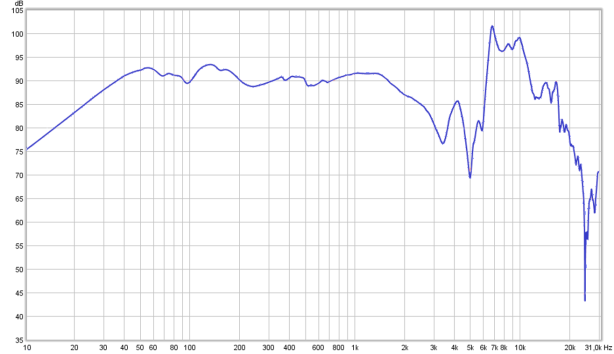
The subbass roll-off is visible. From 40Hz to 1.3kHz it measures pretty ‘neutral’. From 1.3kHz to 5kHz there is a substantial dip. This is very audible and possibly intentional in an effort to reduce the 4kHz resonance. The treble is (as usual with Superlux headphones) much too high in level. Sibilance and ‘fake detail’. The treble thus sounds sharp but is not ‘coarse’ sounding.
Distortion plot of the left channel is shown below.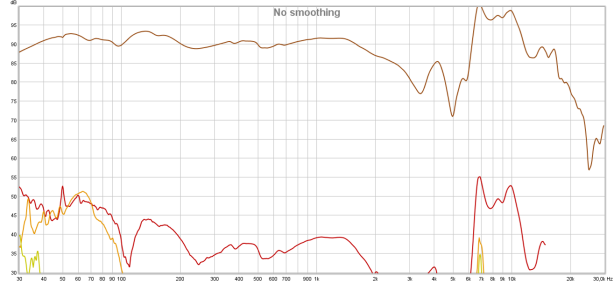
Below the same data but with the Y axis in percentage instead of dB distance.
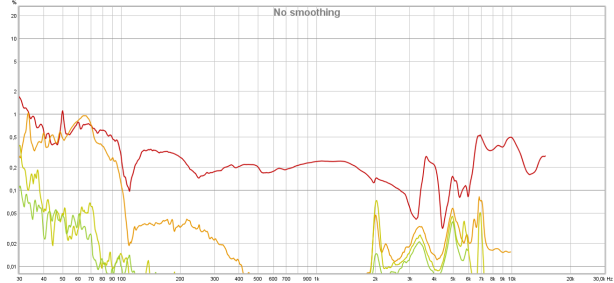
The distortion levels in the bass area is not alarmingly high but not surprisingly low either. It is of a level that can be expected in this price range. The bass does not sound distorted and is ‘tight’.
Treble sounds undistorted but is elevated. Above 4kHz the distortion numbers are quite low and sounds ‘clean’.
The HD688 performs better in that part of the frequency range than the HD662-EVO that hits 2% around 4kHz.
The CSD plots of the HD688 is shown below, Left channel only
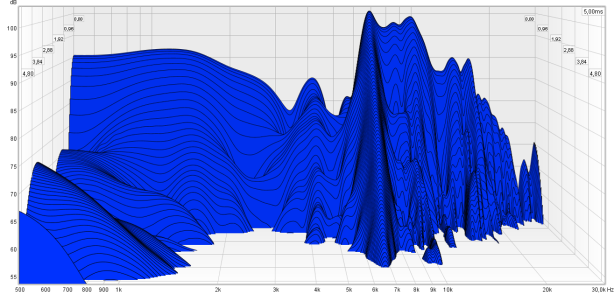
Very short lived ringing visible at 4kHz and a more substantia,l and alarming one, around 7kHz. Above 7kHz the response is a bit ‘messy’. Most likely above 5kHz the driver has break-up issues.
Below the Spectrum plot which is more or less a waterfall plot but looked at from the top where the level is colour coded with the time progressing to the top of the plot. In the CSD the time-scale is 5ms, in the plot below the time scale is 50ms.
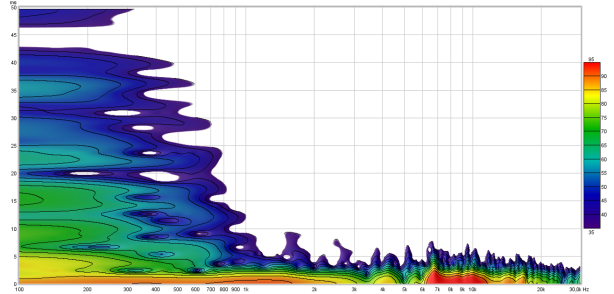
Below the step response of the HD688
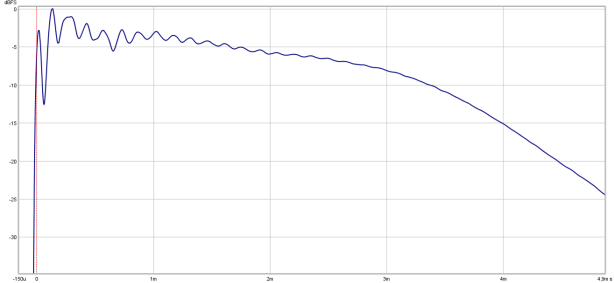
It shows the sub-bass roll-off quite well as the line after the initial rise is sloping downwards. When a good sub-bass response is present it would be more horizontal. The 7kHz resonance is also clearly visible.
Of course this headphone has gone through more extensive scrutiny to see if it can be improved.
The modifications for it, and additional measurements are in a PDF that can be downloaded HERE.
After these modifications the sound signature has improved.
Below the frequency response of the modified HD688, Left, Right
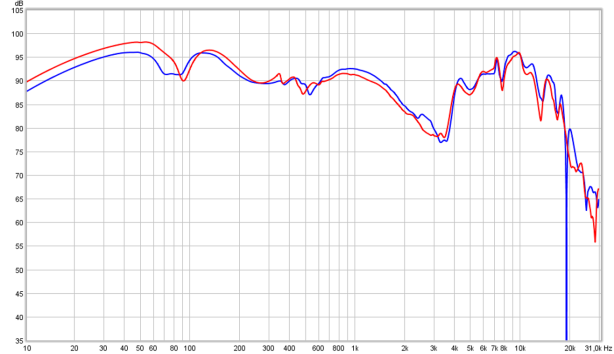
More bass. warmth and smooth higher quality treble.
The plot below show the differences between the stock HD688 and the modified version.
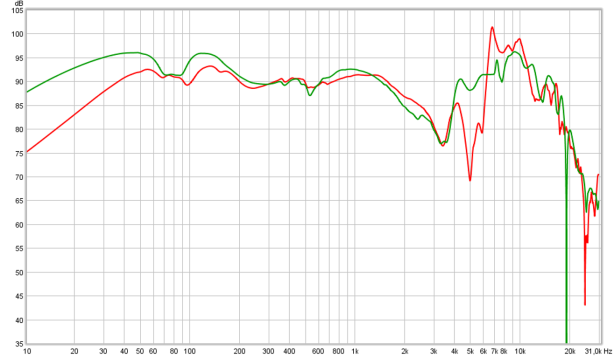
Summary
Positives:
- Sound quality after modifications.
- Good sensitivity, can be driven directly from portable equipment.
- Decent isolation from outside noises.
- Low sound leakage, other people won’t be bothered by your music.
- 2 cable lengths supplied 3.5mm + 6.3 mm TRS jack.
Negatives:
- The inside pad diameter may be on the small side for some people.
- Spacing between the driver and ear (20mm) may be too small for some people.
- Height adjustment is way too little (just 15mm), people with a larger than average head won’t get a good fit.
- Cable is microphonic (touching the cable is quite audible).
- Looks and build quality are not reflected by the price tag.
- Clamping force is very high and needs to be (and fortunately can be) reduced.
In my opinion the sound quality of the modified HD688 is better than that of the modified HD662-EVO in some aspects and perhaps somewhat less in others.
The price of a modified HD688 will be around €75.- which is a lot more expensive than a HD662-EVO (€30.-).
It also takes quite some effort to make it sound more decent. Build quality also is not reflected by its price tag (€60.-).
Once modified the HD688 is quite enjoyable and has some good qualities.
Would I recommend this headphone over the HD662-EVO ?
Yes, when you want softer, smoother and less ‘coarse’ sound but you have to go to some trouble to get there.
Once modified the production HD688 could be described as:
warmish and full sounding, somewhat laid back yet still dynamic with smooth treble and deep bass.
